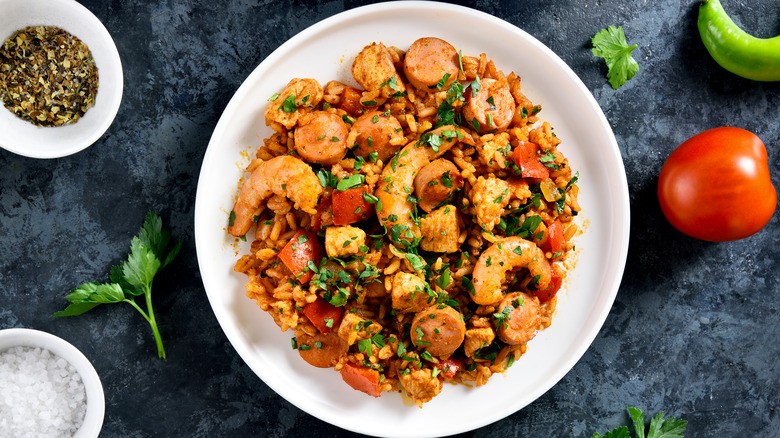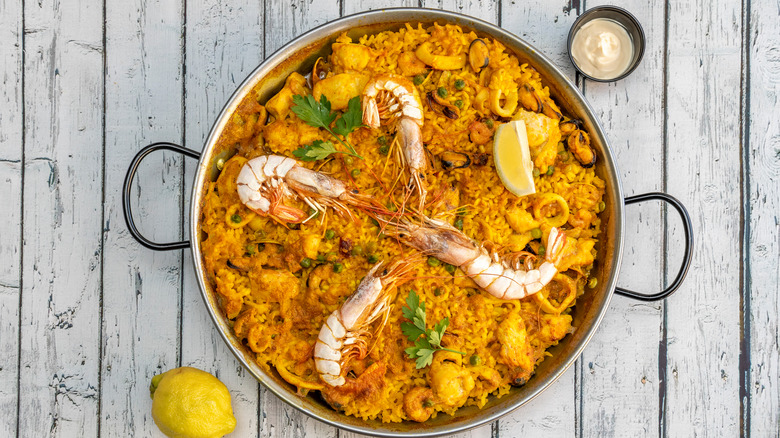How Spanish Cuisine Influenced The Creation Of Jambalaya
Anyone who has experienced the rich food culture in Louisiana knows that creole and cajun cuisines are an explosion of flavor with a myriad of different global influences. The cuisine of Louisiana is usually divided into two subgroups: Cajun and Creole. There's a lot of overlap between the dishes, ingredients, and flavors of these cuisines, but there are some significant differences.
New Orleans & Company cites the significant difference between Cajun and Creole cooking as the use of tomatoes; Creole cuisine uses them, and cajun doesn't. Houma Travel dives a bit deeper, saying that Creole is often considered "city cooking," influenced by many types of cuisine in Europe, Asia, and Africa. In contrast, Cajun cooking is more homestyle and is influenced by the ingredients available to the Acadian settlers who originally hailed from French Canada. Though there are some nuanced differences across both cooking styles, many dishes associated with Louisiana cooking are a combination of both or exist in different variations in both types of cooking like gumbo, étouffée, and jambalaya.
Jambalaya stems from Spanish paella
One of the main dishes in Louisiana cooking is jambalaya. At its core, jambalaya is a rice dish flavored by what is referred to as the holy trinity in Louisiana cooking: a mixture of diced white onion, celery, and green bell pepper. Jambalaya also includes a laundry list of spices plus a variety of meats, often a combination of andouille sausage, chicken, and shellfish (via VeeTee). The Creole version includes tomatoes, though the Cajun version does not, according to Britannica.
If you've ever had the Spanish dish paella, this might sound like a familiar list of ingredients, as both are rice dishes flavored with veggies and a mixture of meats. However, Spanish paella has a crucial component: fragrant saffron that gives it its signature yellow color. Typically, the food of Louisiana tends to be thought of as influenced by the French, but as Chowhound reports, there was a pocket of time in the latter half of the 1700s when the Spanish held control of that territory. With Spanish immigrants calling Louisiana, especially New Orleans, their home, they began to recreate the foods they ate in Spain, including paella. With the critical ingredient of saffron not as readily available, resourceful cooks turned to what was available, which meant swapping in tomatoes and using other meat and vegetables (via New Orleans Restaurants). Over time, this mishmash of paella recipes using locally sourced ingredients morphed into what we know as jambalaya today, reports Southern Food.

